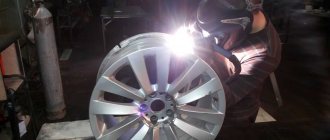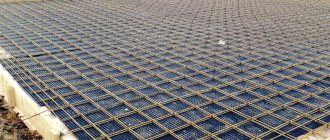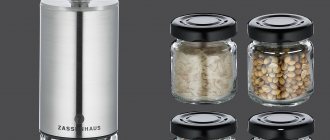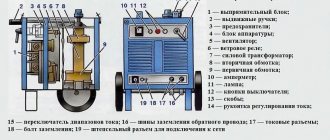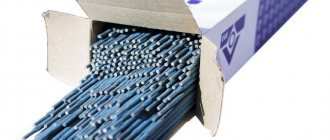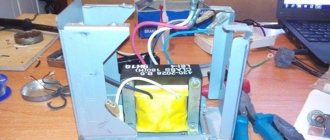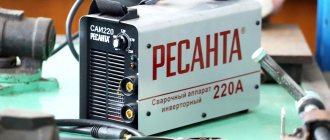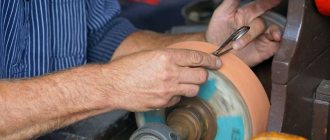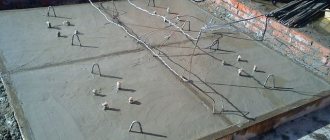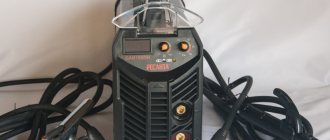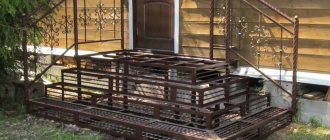Today, a car is a complex system consisting of a large number of components and elements. One of these elements are silent blocks, which act as a connecting element of various parts and assemblies, and also ensure comfort and reliability of vehicle handling. It is worth noting that most factory-produced silent blocks are equipped with polyurethane, while their characteristics and durability are reduced in advance by the manufacturer in order to increase sales in the spare parts production niche. At the same time, the services of replacing silent blocks are quite expensive and, as a rule, seriously hit the car owner’s budget. The situation can be corrected by restoring silent blocks with polyurethane, which is performed using modern materials and technologies and has a lower cost.
Do-it-yourself pressing and pressing of silent blocks: description of work, materials and methods
Everyone who has a car is familiar with the problem when there is a need to press out or press in silent blocks. You don’t always want to turn to specialists, and doing it yourself is much more pleasant.
Thanks to this article, you will learn what silent blocks are, why they are needed, and most importantly, how to press them in and press them out at home using different methods.
This word is of foreign origin. Translated from English, silent means silence, and block means detail.
A silent block, or simply “silent,” is a rubber-metal component; in ordinary words, these are two bushings that are connected to each other by a layer of durable rubber.
This invention, in addition to guaranteeing comfortable and silent movement in a car, has a number of advantages that will be listed below.
Purpose and functions
Silent blocks perform the following functions:
- Protect components from wear and tear by damping vibrations .
- They dampen vibrations that come from the chassis of the wheels, thus providing a comfortable and soft ride.
- Prevent vibrations and beatings that appear during the movement of the car between different elements of the chassis and engine compartment.
And these are just the main advantages; in fact, there are many more.
How to understand when it's time to replace
Before you set out to press in these parts, you should first of all inspect them thoroughly to make sure that they really require replacement. Check for holes and any deformations, for swollen rubber on the hinges and for cracks.
Manipulate the components, determining the presence of backlashes. If the permissible norm is exceeded, then replacement of parts is inevitable. It is not recommended to delay the pressing procedure.
Over time, this problem will only get worse and can lead to suspension arm failure.
The main indicators that indicate the failure of one part or several:
- Driving the car has become much more difficult.
- When overcoming bumps, the suspension begins to knock loudly. Tires wear unevenly, which has not been observed before.
- It has become much more difficult to adjust wheel alignment.
To press this part into place at home, you will need the following tools:
- Mount;
- Jack;
- Set of wrenches;
- New hinges.
It is recommended to use machine oil or other types of lubricant as a lubricant.
Among other things, you will need special mandrels designed for pressing silent blocks; as an alternative, you can use a piece of pipe with the required diameter.
You also need to get a press to press in a new rubber-metal hinge . When it comes to home use, an ordinary vice can serve as a press.
In addition, you can stock up on a set of sledgehammers, but with this approach it is necessary to maintain high precision in the work.
Pressing out at home
Replacing these parts is not as difficult as it might seem at first glance. For example, many car owners made sure of this when they replaced parts, using special equipment for self-replacement. It is for this reason that there are many people who have decided to replace silent blocks with their own hands and at home.
First method
First of all, let's learn about how it should be ideally.
The lever in which the rubber-metal hinge needs to be replaced is installed on a special spacer for the press. The old silent will be squeezed onto this spacer. Then another spacer is installed on top - it squeezes out the old bushing. This method is used by service station workers, since they have the necessary set of spacers and a powerful press of 10-20 tons.
Second method
Almost all car owners, naturally, do not have a powerful press, but many have a jack or a good vice in their garage. If you use a powerful vice, you can successfully squeeze out the old bushings according to the principle that is already familiar to us: a spacer for the original bushing and a spacer for pressing on the bushing.
At first glance, it becomes unclear how you can squeeze out the silent tape with a jack? Everything is very simple: you need to weld a frame in the shape of a rectangle from a channel or corner so that its height is slightly higher than the lever and the jack.
The operating principle is as follows: place the jack in the frame, then install the lever eye on top of the rod, as well as the two spacers mentioned above. We create the required pressure, after which the bushing is squeezed out of its seat.
It must be emphasized that most often a jack with a capacity of 3-5 tons is not able to cope with such work, therefore it is recommended to use 10-ton jacks.
Third method
If you have neither a press nor a jack, but still have a strong desire to replace the silent blocks on your own, you can use the third method - using a simple press puller (bolt with nut or stud).
The principle of operation is to create pressure by gradually tightening the nut on the stud; this method can be called an analogue of a vice.
This pin with a washer of suitable diameter is inserted into the eye through the silent block, then on the other side you should put on a spacer with a washer and tighten the nut.
Rotating along the thread, the nut creates the necessary pressure and forces the silent to be squeezed into a special spacer.
This “method” requires the use of a strong, hardened stud and an equally strong nut. If you take a soft pin or nut, you will most likely fail.
For example, there are cases when, due to strong pressure, the stud becomes bent, as a result of which the thread on the nut breaks. However, there are thousands of those who managed to change silent blocks using this particular method.
After all, everything depends on the quality and strength of the material used.
The advantage of this method is its low cost, as well as its convenience, if you look at it from the “mobility” point of view. In other words, you don’t need, for example, to completely remove the lever or the entire hub; it will be enough to just have a simple press puller like this.
Fourth method
This method can be classified as drastic decisions or extreme measures. Its principle is to use all popular methods and devices to extract silent from the seat. To do this, you need to knock out the old part using a powerful screwdriver or a thick wedge-shaped piece of reinforcement.
You need to try to hammer a screwdriver or something between the silent block and the bushing, thus deforming the wall of the bushing inside. Now that the bushing is crushed and pushed inward, it is not at all difficult to knock it out.
Before you start knocking out the silent block, you need to squeeze out or burn out the inner sleeve of the part and, if possible, all remaining rubber.
Fifth method
The next method of removing a silent block cannot be called pressing out, since it, like the previous one, does not require the presence of a press: all you need is a metal blade, a hammer and a screwdriver. The principle is simple, but unsafe.
We remove the inner sleeve, then take the blade and start cutting the outer sleeve. Try to cut through the old silent as much as possible without damaging the lever itself or the eye.
It is best to make two cuts, and then using a flat screwdriver, the silent block will be easily deformed and knocked out.
If none of the methods listed above helped, and you still need to do it, there is only one option left - to entrust this work to specialists. To achieve the desired result, take the part and go to the service station, where specialists, using a silent block extractor and other special tools, will qualitatively do all the necessary work “in the blink of an eye.”
We have already talked in detail about how to get the “silents”, now another problem arises - how to press this part? This procedure is difficult because it requires certain skills and abilities. An incorrectly or crookedly installed silent will either not work or break prematurely.
Special devices
Replacing silent blocks is done by pressing them out of the suspension arm and pressing them in using special tools. The kit for pressing and pressing silent blocks can be universal or specialized. The first option is suitable for several types of cars, the second is selected for each car individually.
The most common and simple silent block remover consists of:
- 2 washers of different sizes;
- 1 long steel bolt;
- 1 nut;
- 1 steel tube.
The pressing kit can be:
- Mechanical - consists of threaded connections, and pressing is carried out using a wrench.
- Hydraulic – consists of: a hydraulic pump, a hydraulic cylinder, hoses and the unit itself.
You can buy one puller or a whole set. Technical characteristics and methods of their use are indicated in the instructions.
DIY making
To save money, you can make a device for replacing silents yourself at home using improvised materials.
Silent blocks with pressed bushing
Many of our customers are interested in why some products are presented in our catalog in two versions. Why do silent blocks look so different from each other despite the same applicability? And why are silent blocks with a pressed-in internal metal sleeve better?
Let's try to clarify this issue.
When producing spare parts from polyurethane, we try to make maximum use of those properties of polyurethane in which it is superior to rubber in terms of performance. (polyurethane properties). As a result of this, we obtain a product that is externally different from the original, but superior to it in many respects. In particular, it has a longer service life.
There is no connection between the polyurethane and the inner sleeve - no separation from the metal!
Silent blocks with a pressed-in internal metal sleeve (pressed for short) initially have no connection between the material and the internal reinforcement. Consequently, separation from internal reinforcement is impossible, and from external reinforcement is practically excluded due to a significant reduction in load.
Other material properties - different silent block design!
The high wear resistance of polyurethane allows the material to rotate freely relative to the metal sleeve without any noticeable damage from friction with the metal.
The properties of rubber (in particular low wear resistance) do not allow manufacturers of original spare parts to initially use such a design. The reason is that even high-quality rubber wears out quickly and the part becomes unusable. (more about comparing the properties of rubber and polyurethane)
The process of pressing a silent block with a pressed-in internal metal sleeve
1) Lubricant is applied to the inner surface of the polyurethane layer of the silent block.
2) The internal reinforcement is pressed in.
Why are polyurethane silent blocks so different in appearance with the same application?
1. “Pressed” silent blocks, as a rule, are made of a harder material and therefore differ in color, like other parts of our production with a hardness of 80 units. According to Shore, they are green.
2. To prevent possible displacements of the outer outer ring together with the polyurethane layer along the axis relative to the inner metal sleeve (due to the absence of a connection between the polyurethane and the inner sleeve in this embodiment), an additional layer of polyurethane is specially provided. It serves as a stop and fixes the part in place (without, however, preventing its rotation).
There is no connection with the internal fittings, but there will be a creaking sound?
As for the problem of squeaks, high resistance to aggressive environments, in particular petroleum products, allows the use of various types of lubricants when installing parts.
Polyurethane is not afraid of grease! Using lubricant reduces noise and squeaks.
If the lubricant destroys the rubber, it does not have any negative effect on the polyurethane. On the contrary, it even promotes better sliding of the material on the metal, extending the service life of the product.
Will the lubricant be squeezed out when the silent block is working with a pressed bushing?
Thanks to specially designed protrusions, the lubricant is retained in the silent block, and due to the corrugation of the inner surface of the polyurethane, “channels” are created in which a larger amount of lubricant can fit.
Lubricant can be ordered in our online store both when purchasing parts, and separately - in the “Auxiliary products for installation” section (article: 0-60-001)
If “pressed” silent blocks are so much better, why don’t all parts have a similar design?
In some cases, operating conditions, loads and seating make it impossible to use the improved silent block design - with a pressed-in internal bushing. Then we produce only one option - a copy of the original.
We are ready to give you a choice. If both designs receive approximately the same number of positive reviews, both options are represented in our assortment.
For those who prefer that the purchased products look like original products, there is an option with a welded bushing. For those who are not afraid of experiments, they are ready to cooperate with us and report the results of operating our new product - an option with a pressed bushing.
And finally, when test results and reviews indicate the undeniable advantages of the version with a pressed bushing, the production of a copy of the original is suspended and a transition to the production of an exclusively “pressed” version occurs.
What to choose?
The answer is simple. For operation in cold regions, we recommend silent blocks with a pressed-in, rather than welded (as in the original) inner sleeve. Analysis of problematic cases associated with metal separation over the past few years has shown that the most typical reasons for product failure is operation in severe frosts.
Polyurethane silent blocks are made for Russian roads!
Thus, we tried to solve the main problems associated with the operation of reinforcing silent blocks - separation and creaking. Our own experience and numerous customer reviews allowed us to make changes to the original design of the products. Our competent technical solutions make our products most suitable for use on Russian roads.
We recommend reading
Characteristics of polyurethane products
Currently, buying a set of polyurethane-based silents is not a problem. They are even produced by domestic companies, such as Tochka Opory. Reviews about them are pretty good, to be honest.
Polyurethane itself is a colorless material. But the parts are painted, which is done to indicate the degree of their hardness.
In the case of the automotive industry, polyurethane with hardness values in the range of 65-70 units is used.
It is worth highlighting the floating variety of silents. But domestic craftsmen agree that they are not suitable for use in cities such as Irkutsk, St. Petersburg, Samara and many others. Such parts are not intended for our roads, and wear out too quickly.
Do-it-yourself restoration of silent blocks
Today, silent blocks are an integral part and an important technological element of the suspension of a modern vehicle.
The main purpose of silent blocks is to ensure high-quality connection of metal suspension elements thanks to specialized inserts made of durable rubber with an increased level of strength.
Due to the fact that the entire suspension is subjected to constant excessively high loads due to poor quality roads, difficult climatic conditions and improper operation, even the highest quality and durable silent blocks can fail.
For what reason can silent blocks fail?
Before talking about the reasons why silent bolts most often fail, it should be noted that these serviceable elements do not have cracks and serve to ensure:
- maximum comfortable operation of the elements and components of the vehicle chassis;
- have a positive effect on reducing noise while the vehicle is moving on uneven or unpaved roads;
- dampen small vibrations of the car wheels from contact with the road surface;
- provide softness and smooth operation of the chassis;
- allow you to get comfort and safety while driving.
As we said earlier, during operation these parts are constantly subjected to very high loads and therefore it is recommended to carry out diagnostics at a certain level of frequency, as well as the remaining working life.
Moreover, this must be done not only in order not to reduce the comfort and safety of driving the vehicle, but also to prevent serious damage to the chassis and protect its parts from damage.
Rapid failure of silent blocks and the need to repair or replace them can occur as a result of the following factors:
- contact with the rubber element of aggressive liquids, for example, machine oil;
- the occurrence of cracks or ruptures as a result of high loads or long-term constant use;
- carrying out unprofessional installation work related to the repair, restoration or replacement of silent blocks, as a result of which the thread tightening torque was exceeded.
Where can you repair, replace or restore silent blocks in Moscow?
The technical center for diagnostics and repair of passenger cars in Moscow, UniversalService24, offers clients services for the restoration, replacement or repair of vehicle chassis silent bushings.
It should be noted that all work related to the repair and restoration of these vehicle components is carried out by experienced, qualified specialists who are well acquainted with all the nuances and subtleties of this process.
At the same time, to ensure maximum quality and durability of the repair work carried out, our specialists will use the most modern technologies and professional equipment.
Thus, by contacting our company and deciding to repair your car's silent bolts, you will receive a high level of service, a professional approach to fulfilling your obligations and the use of the most modern equipment in the process of carrying out diagnostic and repair work.
How is a car's silent bolts repaired and replaced at the UniversalService24 service center?
Any set of measures carried out by our company to repair or replace silent blocks includes mandatory vehicle diagnostics, as a result of which our specialists not only find out the exact condition of these elements, but also notify the client about other problems and malfunctions present in the chassis. At the same time, it is very important to remember that even a minimal malfunction of silent blocks can cause an imbalance in the vehicle’s chassis, which in turn will lead to deviation from the trajectory of movement and cause tragic consequences.
To repair, replace or restore a vehicle's silent blocks, our service center specialists will clean the vehicle's chassis from contaminants and carry out diagnostic work to reveal a clear picture of the breakdown.
Our specialists have extensive practical experience, constantly improve their own skills and therefore are able to repair or replace silent blocks of any level of complexity in the shortest possible time.
In order to get the best results, we use only original spare parts or those that have been refurbished using our high-tech equipment.
Replacing or restoring silent blocks – what to choose?
It is no secret that silent bolts, installed even on the most prestigious car models, have average characteristics in terms of durability and wear resistance.
This is due to the fact that vehicle manufacturers for the most part make money not from selling new car models, but from the production and sale of spare parts.
Thus, each factory spare part is manufactured with an average service life, after which it becomes unusable.
The procedure for restoring silent blocks, which our technical center offers to potential clients, allows not only to completely restore this part, but also to obtain a durable, wear-resistant and reliable product, several times higher in quality than the factory product. Thus, it becomes clear that the procedure for restoring silent blocks is a service necessary for those car enthusiasts who want their vehicle to have spare parts with maximum reliability and durability.
How is silent blocks restored at the UniversalService24 technical center?
Restoration of silent blocks of a car chassis is carried out by our specialists using specialized, technologically advanced factory equipment and, in fact, has no analogues.
It should be said that this process is advanced, the most progressive and is just beginning to gain popularity in auto mechanics.
And as practice and numerous studies show, silent blocks that have undergone the restoration procedure last, on average, three times longer than those that were manufactured in factories and are original spare parts.
It should also be emphasized that the use of specialized rubber, as well as polymer elements, allows restored silent blocks not to be afraid of exposure to various aggressive environments and have higher resistance to temperature changes and intensive use.
What benefits does a client receive by deciding to restore silent blocks at the UniversalService24 service center?
- Use of original rubber mixture during restoration work, which is not afraid of exposure to aggressive environments and sudden changes in temperature.
- Restored elements have high resistance to deformation and mechanical loads.
- Development of a unique product using modern production equipment that has no analogues.
- Using technologies and production processes found only in leading service stations.
- Prompt implementation of repair and restoration work, regardless of their level of complexity.
- Strict adherence to the manufacturer's recommendations.
- Providing guarantees for all types of work, including restored silent blocks.
- Availability of diagnostics and prevention of expensive and time-consuming repairs of the chassis.
How to restore silent blocks with your own hands?
Replacing silent blocks in Moscow 4.80/5 (96.00%) 5 votes
Silent blocks are a connecting mechanism for suspension parts that take on powerful loads and resist the deformation that the suspension receives.
They are otherwise called a rubber-metal hinge due to their design: two metal bushings with a rubber or polyurethane insert, which wear out over time and cease to perform their functions. In this case, replacement of the front and rear silent blocks .
What are silent blocks in a car and what are they for?
- In the front suspension for attaching levers, rods, and a stabilizer.
- In the back - for attaching the rod.
Such a small part performs important functions (dampens vibrations) and affects the performance of the entire chassis, so timely maintenance and diagnostics cannot be neglected.
If you need to replace silent blocks in Moscow in a car of any brand (Mercedes, Ford Focus, Passat, Octavia, Nissan, Astra, Hyundai), contact one of the car services provided.
Car services in Moscow for replacing silent blocks:
Signs of silent block failure
Everyone knows that the best treatment is prevention, and it’s the same with cars. Timely diagnosis and troubleshooting will help avoid costly repairs and replacement of chassis parts.
The service life differs depending on the car brand, but on average, manufacturers recommend checking the hinges every 100 thousand kilometers.
Diagnosis and replacement of silent blocks in Moscow is carried out more often, since in large cities there is a large load on the car.
And the suspension takes the brunt of the blow due to poor road surface, so every 50 thousand kilometers it is worth visiting a service station.
Timely diagnostics of the chassis will make your car safe on the road.
You can suspect a malfunction based on the following signs:
- The car is “thrown” in different directions;
- Tires wear unevenly;
- The car drives away at speed;
- Steering wheel turn with delay;
- Wheel camber or toe distortion.
What will result from untimely replacement of silent blocks?
When they are worn to their maximum, the car may skid to the side when driving, in other words, “pulling to the side.” Another sign is uneven wear of the tires, because of this the hinges will begin to collapse, and then the suspension arm.
As you understand, this will lead to the next expensive repair.
To prevent this from happening, contact a car service center in time to diagnose and replace the front and rear silent blocks. To do this, leave a request or contact one of the phone numbers presented on the site.
DIY diagnostics and replacement of silent blocks
If you have questions about the car's chassis and there are doubts about the performance of the hinges, you can conduct a visual inspection. It is better to do this in a viewing hole.
It is recommended to inspect silent blocks at least every 40 thousand km. With aggressive driving, the service life will be reduced several times.
On clean and dry silent blocks, mechanical damage (breakthrough, cracks, rubber defects) is easy to notice with the naked eye. The backlash is also checked for the reaction of the lever to swinging.
It is very difficult to carry out a complete diagnosis yourself, especially since you should not try to replace it yourself if you have never done this before.
Replacing front silent blocks - Stages
- We remove the wheel where we are going to replace it;
- Unscrew the bolt;
- Pull back the stand and unscrew a few more bolts;
- We knock out the old front or old silent block, lubricate it with a special solution;
- We put everything back together in reverse order.
If you can’t handle this yourself, contact your nearest car service center. The service will be performed for a car of any brand (Mercedes, VAZ, Renault, Hyundai, Passat, Ford Mondeo, Tiguan, Renault).
How is the replacement carried out?
When replacing front arm silent blocks, the most technically difficult stage is pressing, for which special tools and equipment are used. It is very important not to damage the interface between the hinge and the suspension element.
- Lubricate the place where the new element will be installed;
- We press in a new element;
- We take a wooden block, insert a bolt into the bracket, lift the eye;
- Remove and tighten the bolts securing the beam.
This can be done by any service station specialist in Moscow. Sign up now.
Restoration of silent blocks
An alternative to replacement may be to restore the hinge. As a rule, they are restored with polyurethane, but it is possible to make a hinge from rubber. To do this, the hardness of the original part is measured and the material required for restoration is determined.
The cost of replacing silent blocks in Moscow depends on the make of the car and the type of the hinge itself. Polyurethane ones are more expensive, but they also last significantly longer.
You can sign up for diagnostics, maintenance and replacement of silent blocks in Moscow online on our website.
Car services in Moscow:
The final stage of replacing silent blocks with your own hands is adjusting the wheel alignment
It is mandatory to perform wheel alignment adjustment. If it is broken, tire wear increases, and at the same time the car pulls to the side.
Camber is the vertical angle of the wheel that runs perpendicular to the road. Toe is the difference between the front and rear points of the wheels.
Replacing silent blocks and adjusting wheel alignment is a serious and labor-intensive process that can take a lot of effort and time.
If you are not confident in your abilities, it is better to contact the nearest car service center, where they will carry out all the necessary work and procedures as soon as possible.
conclusions
To ensure safe driving, you should always monitor the condition of the suspension arms and silent blocks. If the car is thrown from side to side and pulled away while driving, try to get to a service station as soon as possible.
Do not drive at high speeds and, if possible, do not use a car with such defects, so as not to cause greater harm to the car and your own health.
Make an appointment to replace silent blocks in Moscow at one of the car services presented above right now. The service is available for cars of all brands (Ford Focus, Nissan, Skoda Octavia, Tiguan, Kia Sid, BMW, Opel Astra and others).
What it is
The silent block or silent block is an important component of the vehicle suspension. Its task is to reduce noise levels and ensure smooth movement. This element is the connecting link between the components of the chassis. Due to its properties, it reduces vibrations and helps reduce the level of shock load on the body.
Externally, it is a fairly light and small element, which is held in place by two metal bushings. But it is this rubber or polyurethane component that allows you to soften the shock of the suspension.
The development of technology has led to the emergence of a new type of silents, which previously were exclusively rubber.
